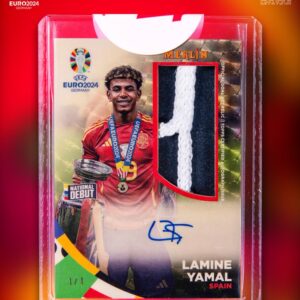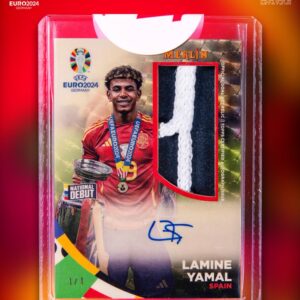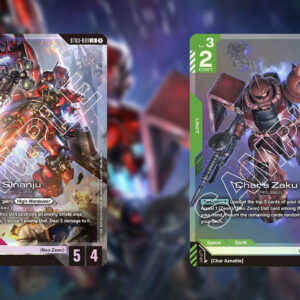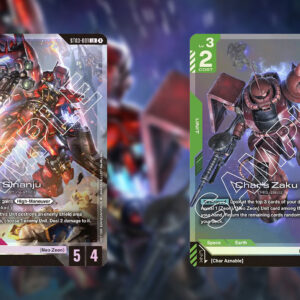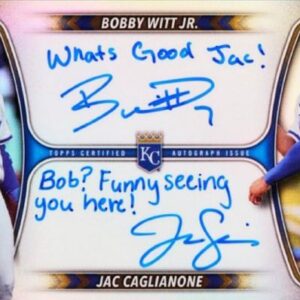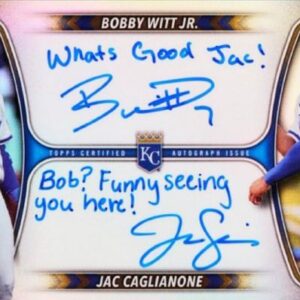If there’s anyone who could turn a pair of pants into a million-dollar art installation, it’s Shohei Ohtani, the baseball wunderkind whose gravity-defying talents continue to reshape the diamond’s lore. The world of baseball collectibles, a universe where passion and a smattering of nostalgia give rise to jaw-droppingly expensive memorabilia, just gained a new contender in its ever-spinning wheel of fortune: a baseball card adorned with a snippet of Ohtani’s game-worn trousers sold for a staggering $1.07 million at Heritage Auctions.
To your typical spectator, it might sound absurd. How does a scrap of fabric command such a premium? It all comes down to timing, triumph, and just the right sprinkling of stardust. This particular swatch wasn’t from an ordinary game day; it hailed from the match where the Dodgers’ Japanese phenomenon etched his name into Major League Baseball history by becoming the first player ever to achieve an elusive 50 home run, 50 stolen base season. In this world, these pants weren’t just game-worn—they were the very threads in the tapestry of MLB mythos.
The card itself, a Topps Dynasty Black creation, is a masterpiece of minutiae, boasting Ohtani’s autograph in lustrous golden ink nestled alongside a meticulous MLB logo patch. Collectors are seduced by logos, hunted pieces of fabric that whisper legends of the past and promise financial gain in the future. This time, the collector remains anonymous, their identity more cloaked than Superman in his Clark Kent guise—quite a fitting parallel, given Ohtani’s apparent superhuman feats on the field.
This sale shattered Ohtani’s previous card record of a modest half-million, leaving hobbyists buzzing with a mix of awe and envy. A previous iteration, a 2018 rookie card, had held the crown, a testament to collectors’ Holy Grail-like obsession with rookie versions. This pants-adorned marvel, though new, broke all precedents, underscoring what everyone in the inner circle already knows: it isn’t always the age of the card but the moment it immortalizes that truly counts.
Meanwhile, the auction world hasn’t merely wrapped its proverbial claws around a single pantaloons-piece. Topps went beyond the call of duty, crafting a trio of unique cards each celebrating Ohtani’s historic 50-50 crescendo. Discerning fans snagged another variant at $173,240—it too featuring those magical trousers, spliced with batting glove tags. It seems collectors, like these cards, are often split between love for gloves and the allure of expensive slacks.
Chris Ivy, stalwart of Heritage Auctions’ sports section, spoke to the significance in no uncertain terms. “Shohei Ohtani is currently baseball’s biggest rockstar, and this card captures a genuinely historic moment—plus, people really dig that logo patch.” Indeed, the phrase “logo patch” is equivalent to a siren call to serious collectors, especially on a card that steps outside the sacred realm of rookie status yet ascends to the peak of desirability.
Rivalries in memorabilia know no boundaries. Earlier this month, a rookie card of Pirates pitcher Paul Skenes sold for a handsome $1.11 million. Yet, despite this financial close-call, it strikes the comparative banality of such a transaction when paired against the mythos of Ohtani’s pants. After all, when cosmic events line up and pants precipitate historical achievement, collectibles and their astronomical prices follow suit.
Fans and enthusiasts—bewildered and enthralled—may ponder the cottage industry burgeoning around this singular game moment. In the utterly electrifying atmosphere of LoanDepot Park, Ohtani stealthily whisked his way into the rarified air of baseball immortality by stealing bases 50 and 51, striking like a coiled viper on the prowl. By the seventh inning, he cracked a Marlins pitcher’s lazy curveball with the ferocity of cannon fire, hurling the ball 391 feet. This very orb eventually demanded an eye-watering $4.39 million at auction, proving the boundless extents of fandom and the allure of baseball’s most dramatic narratives.
With events like this, one cannot help but speculate on what might hit the auction blocks next—perhaps socks that never quite made it through the wash, shoelaces that barely held up the mightiest warriors of the game, or even chewing gum wrappers that once graced the interiors of dugout benches. In this frenzied world of collectibles, no thread is too small, no fragment too fleeting for enthusiasts ready to spin tales of what once decorated the legendary Ohtani. Collectors, ready your budgets; history is expensive, especially when made of cloth.
